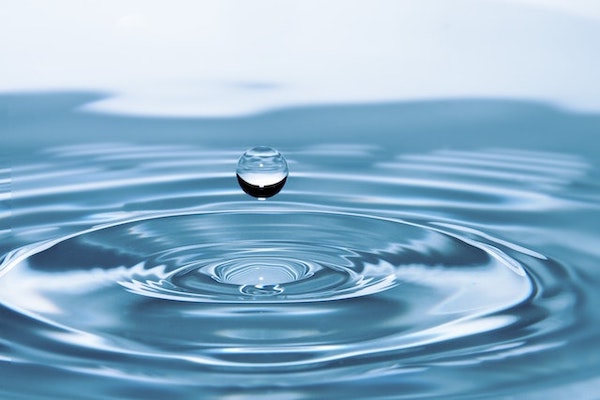Plumbing best practices that keep your water flowing clean
Clean water depends on healthy pipes and that means the right products, investment and design. John Fennell tells more.
A healthy plumbing system must consider everything from design, installation and commissioning to the operation of the system for the entirety of its service life. Plumbing systems that are poorly designed, or where the systems operation has changed over time, can lead to poor quality water.
One of the greatest threats to the quality and longevity of a plumbing system is stagnant water, which was highlighted at Perth Children’s Hospital in 2017. Allowing stagnant water to develop can generate biofilms in the pipes, potentially allowing the growth of pathogens which are harmful to people. Uncirculated water can accumulate toxins from chemicals absorbed through plastic pipes or heavy metals being leached from metallic pipes over time.
The Plumbing Code of Australia and Australian Standard AS /NZS 3500 set out requirements and guidelines to ensure that these problems do not arise.
Design and installation
The correct design of a plumbing system is key to healthy, high-quality performance. During design, dead leg piping should be avoided or restricted to being as short in length as possible. A flushing facility (tap) should be provided where there is low draw-off and fixtures that are seldom used should be placed on flow lines or close to a regularly used service.
Cross-connections of the drinking water supply to other water supplies, such as rainwater or recycled water, is another potential contamination. All water supply systems must be designed and installed to prevent contaminants from entering the drinking water supply.
Where there is a possibility of cross-connection, protection is achieved by the installation of backflow prevention devices and air gaps between supply pipework and storage systems. Identification and marking of non-potable water supplies and colour coding of pipework is another way of reducing the chances of contamination. Section 4 of Australian/New Zealand Standard AS/NZS 3500.1 deals with this aspect and must be strictly adhered to.
Correct pipe sizing during design is also crucial. There needs to be sufficient water for all the intended uses, including peak demand, and if the pipe size is too small the water velocity and friction losses will be too great, potentially causing erosion and wearing of the pipes. However, if the pipes are excessively oversized, there will be insufficient flow to minimise biofilm build-up and settling of silt. AS/NZS 3500.4 that deals with heated water has a section on circulatory heated water systems with information on velocity, temperature and flow rates velocity requirements.
Commissioning and operation
During commissioning all systems shall be thoroughly flushed out as soon as possible after installation to remove foreign matter and should continue until the water runs completely clear. The system can then be pressure tested in accordance with the relevant regulation.
Water from reticulated systems (municipal water supply) is usually satisfactory for flushing and testing purposes. Where non-disinfected water is to be used for flushing and testing, water shall be disinfected. A procedure for disinfecting water is outlined in AS 4809 and AS/NZS 3500.1.
If more than eight weeks between installation and full system use is unavoidable:
- The system shall be kept completely full and clean water shall be flushed frequently (at least every four weeks) from each fixture until the system is used, or
- The system shall be drained completely and dried out by blowing air through the system. Then, if practicable, the piping shall be sealed to prevent intrusion of water and foreign matter.
When the system is connected to the permanent water supply with all taps and valves installed, all draw-off points should be opened until clear water exits the system. This will assist in the development of the protective internal film within the pipe work and draw fresh disinfected water into the system.
In large installations, the flushing should be performed in sections. Multi-storey buildings should be flushed by commencing on the uppermost floor and working down storey by storey.
Water services used to supply drinking water shall be protected against contamination during installation, commissioning and repairs. If any water supply service is exposed to foreign substances or contaminated supply, the service shall be flushed, chlorinated and tested before being placed in service.
After the water system is in operation, special care needs to be given if there is a modification or change in usage patterns, or where extensions are added to the systems. The entire system needs to be checked so that all requirements of the Standards and Plumbing Code of Australia are continually being met.
How can copper tube help?
Copper tubing has been the primary material for Australian and New Zealand plumbing for over 50 years. Design information, including the governing standards, are based around copper and copper pipe sizes.
Copper and copper alloys (brasses and bronzes) are natural anti-microbiological materials and are regularly used in health care environments in touch surface application to reduce the risk of infections. Recent studies1 have shown that copper and copper alloys materials used in plumbing systems demonstrated the least bacterial fouling compared to stainless steel and some plastics.
Taking the extra care and consideration when designing, installing, commissioning and operating a plumbing system will improve the quality, performance and life of the system. Of the utmost importance is the profound effect these steps can have on the quality of water being conveyed in a system.

